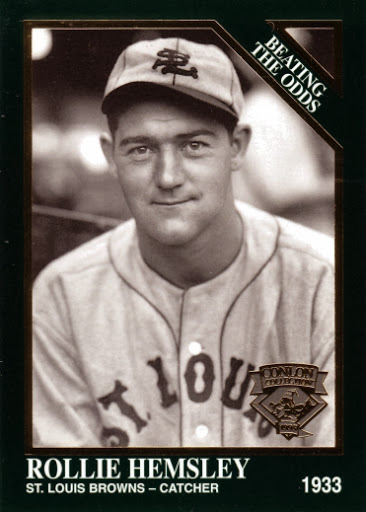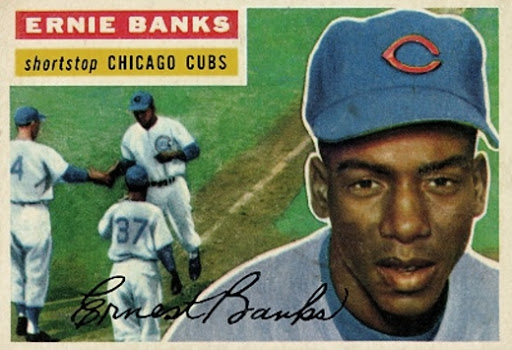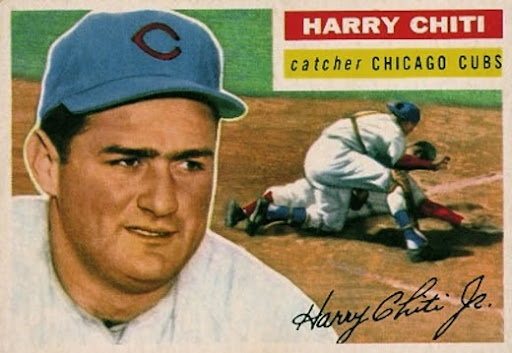Topps Takes A Swing At Alliteration, And So Do I
 When I was a young collector, Topps issued cards that featured teammates with titles like Buc Blasters, Tiger Twirlers, Tribe Thumpers, Sox Sockers and the like. I remember hoarding them because they had a team’s best players on the same card. These cards, along with stars like Mays, Mantle, Killebrew and Koufax were the ones that stayed in the shoe box, avoiding the ignominy of being flipped or entwined into my bicycle’s spokes.
When I was a young collector, Topps issued cards that featured teammates with titles like Buc Blasters, Tiger Twirlers, Tribe Thumpers, Sox Sockers and the like. I remember hoarding them because they had a team’s best players on the same card. These cards, along with stars like Mays, Mantle, Killebrew and Koufax were the ones that stayed in the shoe box, avoiding the ignominy of being flipped or entwined into my bicycle’s spokes.
The text on the back of the cards was informative and gave the sort of background on the players that their regular cards, dedicated primarily to statistics, didn’t provide. The players featured on this card went on to have very good careers. Hall of Famer Willie Stargell “pummeled” 475 home runs for Pittsburgh, the only major league team he played for. He became a fan favorite who was affectionately referred to as “Pops” in the latter part of his career. Donn Clendenon was another Pirate “pounder” who “punished” pitchers with abandon. He moved on to play for other teams, including the Expos, Cardinals and Mets. In the 1969 World Series, he mashed three home runs as the Metropolitans beat the Orioles.
I got to thinking not too long ago about how much fun it would be to come up with some of these cards myself, but with a twist. Rather than feature the cream of the crop, like Topps did, I decided to recognize lesser performers. So off I went, in the spirit of Casey Stengel, who once said, “without the losers, where would the winners be?” and set about choosing my teams and players.
 Mets Missers: Talk about fertile ground! You could have a field day with these guys! After considerable thought, I selected the 1980 version of the Metropolitans, who finished with a disappointing 67-95 record, and had any number of players who could be featured either individually or as a “Mets Missers” group. This squad was below league average in runs, hits, double, triples, batting average, on- base percentage, slugging, total bases and of the twelve teams in the National League that season, dead last in home runs. Candidates for individual honors are many. “Baffling” Billy Almon whiffed his way to a .170 batting average. Journeyman outfielder Dan “Do Nothing” Norman didn’t fare much better and struggled to hit .185. Utility man Jose “Oy Vey!” Moreno had the worst batting average of his career that season, weighing in at a paltry .196. An optional name for the card due to all the whiffing: Feel the Breeze!
Mets Missers: Talk about fertile ground! You could have a field day with these guys! After considerable thought, I selected the 1980 version of the Metropolitans, who finished with a disappointing 67-95 record, and had any number of players who could be featured either individually or as a “Mets Missers” group. This squad was below league average in runs, hits, double, triples, batting average, on- base percentage, slugging, total bases and of the twelve teams in the National League that season, dead last in home runs. Candidates for individual honors are many. “Baffling” Billy Almon whiffed his way to a .170 batting average. Journeyman outfielder Dan “Do Nothing” Norman didn’t fare much better and struggled to hit .185. Utility man Jose “Oy Vey!” Moreno had the worst batting average of his career that season, weighing in at a paltry .196. An optional name for the card due to all the whiffing: Feel the Breeze!
 Brownie Bumblers: The 1937 St. Louis Browns bamboozled their way to a 46-108 record. This team was tough to figure out, because they could hit, averaging .285, which was second among the American League’s eight clubs that year. They lacked speed and were last in the league in triples, legging out only 44 of them and stealing a league low 30 bases. They didn’t walk much, coming in last, so not surprisingly, their on-base percentage standing was also low, seventh. The pitching staff doesn’t come off unscathed either. They too came in dead last in any number of categories including the fewest games won, the highest earned run average, the least number of complete games and shutouts, and the highest number of hits, runs, earned runs and home runs surrendered.
Brownie Bumblers: The 1937 St. Louis Browns bamboozled their way to a 46-108 record. This team was tough to figure out, because they could hit, averaging .285, which was second among the American League’s eight clubs that year. They lacked speed and were last in the league in triples, legging out only 44 of them and stealing a league low 30 bases. They didn’t walk much, coming in last, so not surprisingly, their on-base percentage standing was also low, seventh. The pitching staff doesn’t come off unscathed either. They too came in dead last in any number of categories including the fewest games won, the highest earned run average, the least number of complete games and shutouts, and the highest number of hits, runs, earned runs and home runs surrendered.
There was one player who caught my full attention, however. Catcher Rollie Hemsley played in 100 games, batted .222 and hit 3 home runs. I noted he was a journeyman; the Browns were his fourth team. Yet just a few years before, he was an All Star for the Browns, in 1935 and 1936. That was a big drop in performance. What happened to him? I started to dig and found my answer in the 1995 Sporting News Conlon Collection issue. The back of Hemsley’s card tells the story:


The Hall of Famer & The Hall of Shamer : The 1956 Chicago Cubs finished dead last, with the emphasis on dead, clutzing their way to a 60-94 record. I like the idea of combining polar opposites for this card. Ernie Banks was well known for his cheerful disposition and his superb skills. He won two National League Most Valuable Player Awards and was enshrined in Baseball’s Hall of Fame. Also on this team was Harry Chiti, a fringe player who is best known as the answer to a famous trivia question, “Who is the only major league player ever traded for himself?”

We’ll see you soon with our next post!



Comments